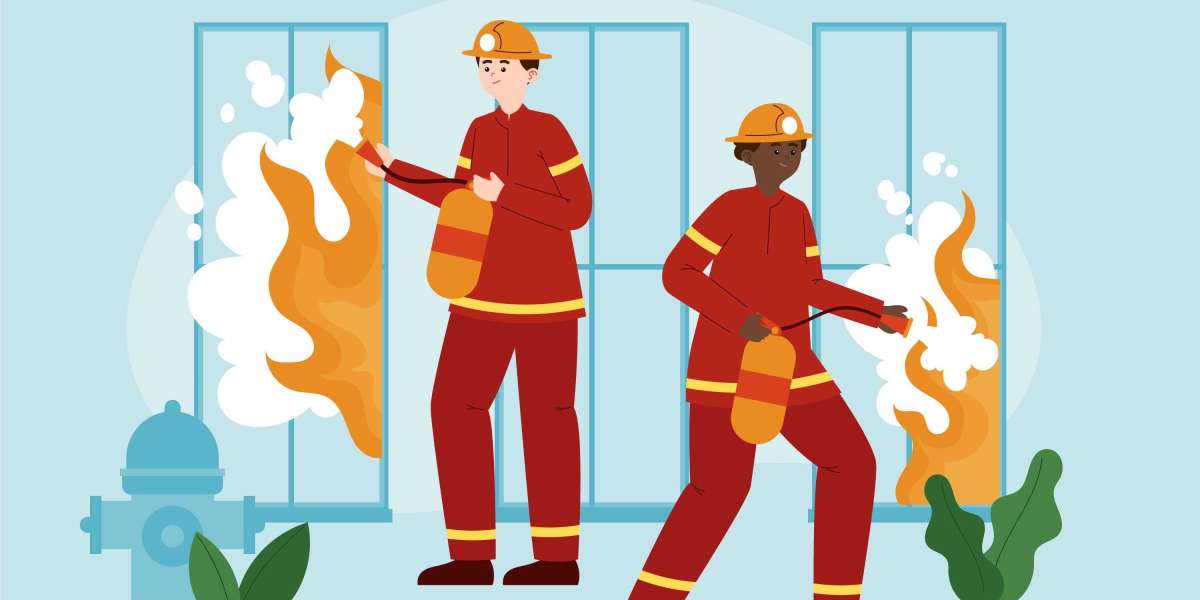Introduction
Fire safety is a critical concern in residential buildings, especially in flats where many residents share common spaces. Effective fire safety and risk management are essential to protect lives and property. This guide explains what fire risk assessments are, why they are important, and how they can be implemented in residential flats.
Understanding Fire Risk Assessments
A fire risk assessment is a systematic evaluation of the building to identify potential fire hazards, assess the risks associated with these hazards, and implement measures to minimize or eliminate them. The process involves:
- Identifying Hazards: Recognizing potential sources of ignition (e.g., electrical faults, cooking appliances) and combustible materials.
- Evaluating Risks: Determining the likelihood of a fire occurring and the potential severity of its impact on residents.
- Implementing Controls: Putting measures in place to reduce the risk, such as installing fire alarms, ensuring clear escape routes, and maintaining fire extinguishers.
- Reviewing and Updating: Regularly revisiting the assessment to account for changes in the building layout, occupancy, or use of space.
Legal and Regulatory Requirements
In many countries, fire safety regulations require that landlords, property managers, and building owners conduct regular fire risk assessments. Key legal points include:
- Compliance with National Standards: Many regions have national fire safety standards that specify the requirements for fire prevention, detection, and evacuation.
- Duty of Care: Building owners have a legal obligation to protect residents by ensuring that adequate fire safety measures are in place.
- Record Keeping: Documentation of fire risk assessments and the measures taken is often mandatory and may be required by local authorities or insurance providers.
- Regular Reviews: Fire risk assessments should be reviewed at least annually or whenever there are significant changes to the building or its occupancy.
Common Fire Hazards in Residential Flats
Understanding the typical fire hazards in residential flats is essential for effective risk management. These hazards may include:
- Electrical Faults: Faulty wiring, overloaded sockets, and malfunctioning appliances can lead to electrical fires.
- Kitchen Fires: Cooking equipment is a common source of ignition, particularly in flats where space is limited.
- Smoking Materials: Improper disposal of cigarettes or other smoking materials can ignite nearby combustible materials.
- Heating Equipment: Improper use or maintenance of heating devices, such as space heaters, can be dangerous.
- Flammable Materials: Accumulation of flammable materials in hallways, storage areas, or personal belongings can increase the risk.
Steps to Conduct a Fire Risk Assessment Residential Flats
Preparation:
- Gather all relevant building information, including layout plans, occupancy details, and existing fire safety measures.
- Assemble a team of responsible individuals, which might include property managers, maintenance staff, and fire safety experts.
Hazard Identification:
- Inspect each flat and common area to identify potential ignition sources and combustible materials.
- Consider specific risks unique to residential environments, such as the presence of elderly residents or children.
Risk Evaluation:
- Assess the likelihood of a fire starting in each identified area.
- Evaluate the potential impact on residents, considering factors like evacuation routes, fire detection systems, and the building’s structure.
Control Measures:
- Implement preventive measures such as installing smoke detectors, fire extinguishers, and automatic sprinkler systems.
- Develop and communicate an emergency evacuation plan, ensuring that all residents understand the procedures.
- Ensure that corridors, stairways, and exits are kept clear of obstructions.
Documentation and Communication:
- Record all findings, decisions, and actions taken as part of the risk assessment.
- Provide clear communication to residents regarding fire safety procedures, including regular safety drills.
Review and Update:
- Schedule regular reviews of the fire risk assessment, especially after any significant changes (e.g., renovations, changes in occupancy).
- Update control measures as necessary to maintain a high level of safety.
Best Practices for Fire Safety and Risk Management
- Regular Training: Ensure that residents, building staff, and management are regularly trained on fire safety procedures and emergency response.
- Maintenance Checks: Conduct periodic checks on fire safety equipment such as alarms, extinguishers, and sprinklers.
- Clear Signage: Install clear, visible signage to indicate exit routes, assembly points, and the locations of fire-fighting equipment.
- Emergency Drills: Organize fire drills to test the effectiveness of the evacuation plan and identify any areas for improvement.
- Professional Assessments: Consider hiring a professional fire safety consultant to conduct thorough risk assessments and provide expert recommendations.
Conclusion
Effective fire safety and risk management in residential flats are vital for ensuring the safety of residents and protecting property. By conducting regular fire risk assessments, implementing preventive measures, and maintaining clear communication and training, building managers and property owners can significantly reduce the risk of fire incidents. This proactive approach not only complies with legal requirements but also fosters a secure living environment for all residents.






